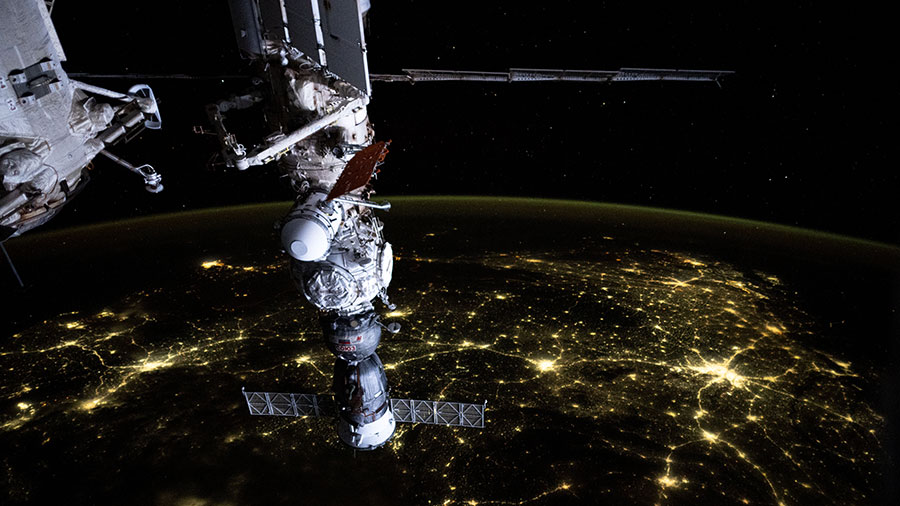The week kicked off with a multitude of space biology activities as the Expedition 71 crew studied microgravity’s effect on humans and serviced research hardware. Robotics and lab maintenance rounded out Monday’s schedule aboard the International Space Station.
NASA Flight Engineer Jeanette Epps worked throughout Monday on biomedical activities processing her blood, saliva, and urine samples for analysis. After her blood draws, she spun the samples inside a centrifuge then stowed them in a science freezer. The biological specimens are then compared to astronaut samples collected both pre-flight and post-flight to understand how the human body adapts to long-term weightlessness.
In the afternoon, NASA astronaut Mike Barratt operated the Ultrasound 2 device and scanned the neck, shoulder, and leg veins of NASA Flight Engineer Tracy C. Dyson. Doctors on the ground remotely provided guidance and monitored the vein scans. The ultrasound converts the echo scans into a video signal that is downlinked to Earth and viewed as part of periodic crew health exams.
Earlier, Barratt measured the airflow in the Harmony module crew quarters then reorganized combustion research components to enable a space fire safety experiment. Dyson investigated ways to improve the delivery of respiratory system drugs potentially offering benefits to both the health care and food industries.
NASA Flight Engineer Matthew Dominick spent his day servicing science gear throughout the orbital lab. He started the day checking out and configuring hardware supporting the Rodent Research-28 investigation that is exploring a gene therapy to maintain eye health in microgravity. In the afternoon, he opened up the Life Science Glovebox and audited its systems and components to ensure ongoing advanced biology research operations.
Roscosmos Mission Specialist Alexander Grebenkin powered up the European robotic arm attached to the Nauka science module and practiced maneuvering it in basic operator mode. Cosmonaut Nikolai Chub brushed up on his medical skills familiarizing himself with emergency hardware and procedures onboard the station. Station Commander Oleg Kononenko inspected components inside the Zarya module, photographed the condition of windows in the Nauka and Zvezda modules, then worked on an oxygen generator.
NASA, Boeing, and ULA (United Launch Alliance) teams now are targeting a launch no earlier than 3:09 p.m. EDT Saturday, May 25, for the agency’s Crew Flight Test carrying NASA astronauts Butch Wilmore and Suni Williams to the International Space Station.
Learn more about station activities by following the space station blog, @space_station and @ISS_Research on X, as well as the ISS Facebook and ISS Instagram accounts.
Get weekly video highlights at: https://roundupreads.jsc.nasa.gov/videoupdate/
Get the latest from NASA delivered every week. Subscribe here: www.nasa.gov/subscribe


